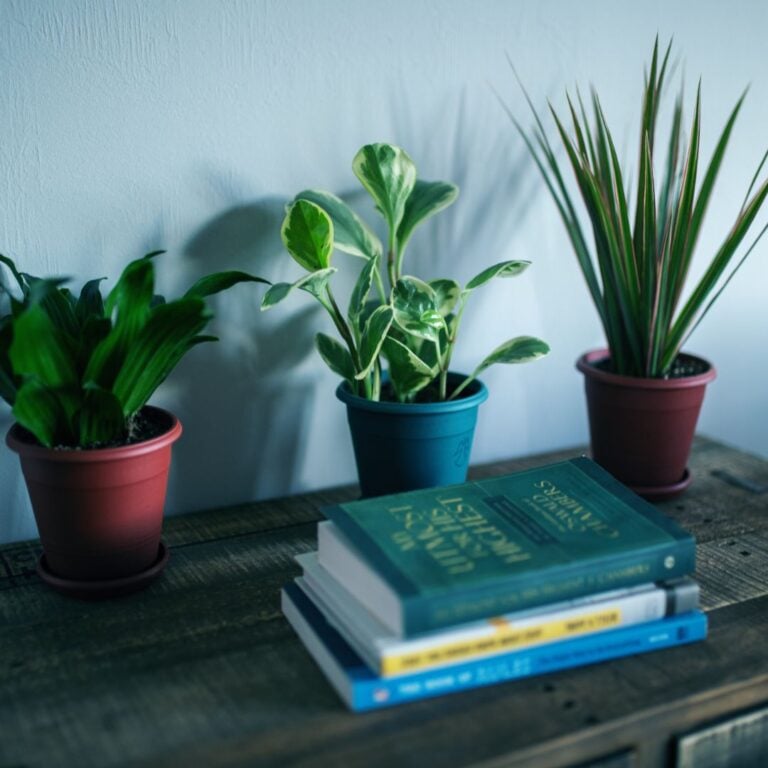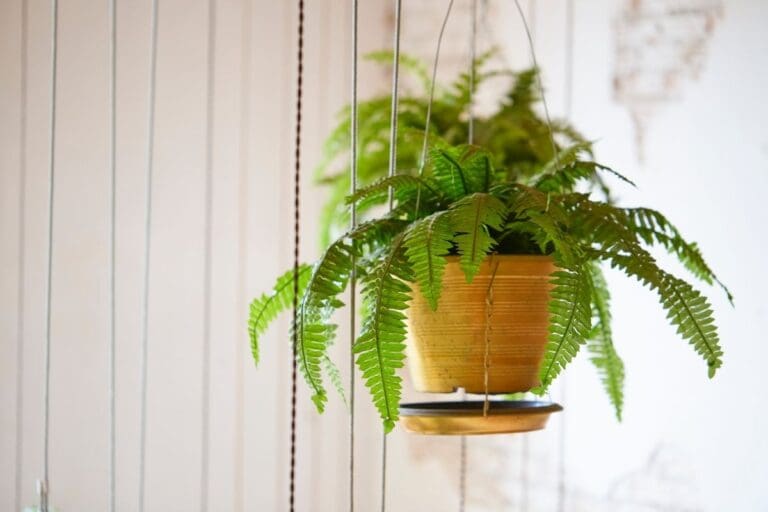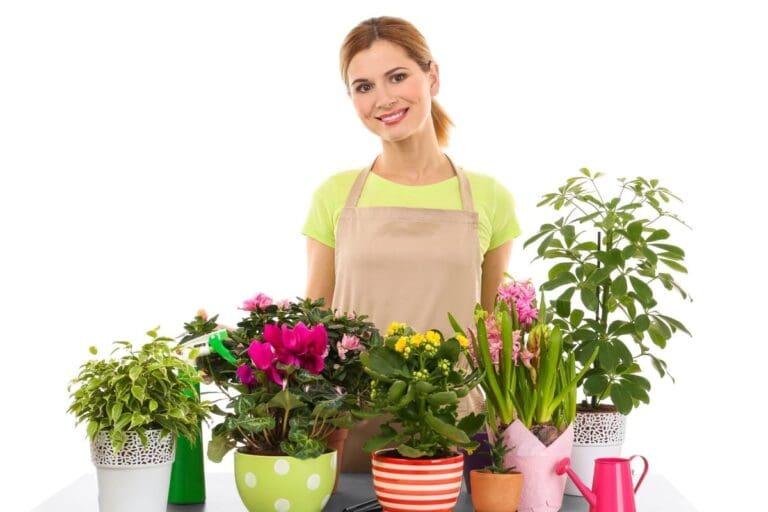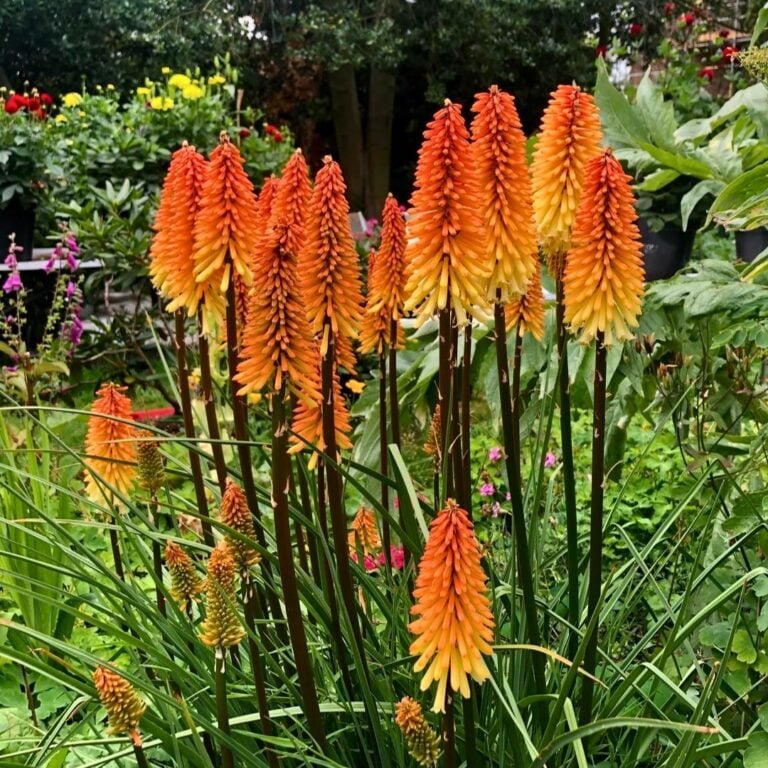10 Succulents That Can Handle Winter Indoors And Still Thrive
I just love keeping succulents around—they bring a bit of life to my home, even when it’s freezing outside. Some types handle winter indoors like champs, so I can enjoy them all year without too much fuss.
Knowing which succulents can thrive inside during colder months saves a lot of time and stress. It’s honestly such a relief.
When winter rolls in, I always look for varieties that don’t mind less sunlight or cool air. That way, I can still enjoy their colors and shapes without worrying about them fading away.
Please note: Simplify Plants is reader-supported. As an Amazon Associate, I earn from qualifying purchases made by our readers with no extra cost added to you all! Some links in the post are affiliate links and I get a commission from purchases made through links in the post.
1) Haworthia Fasciata
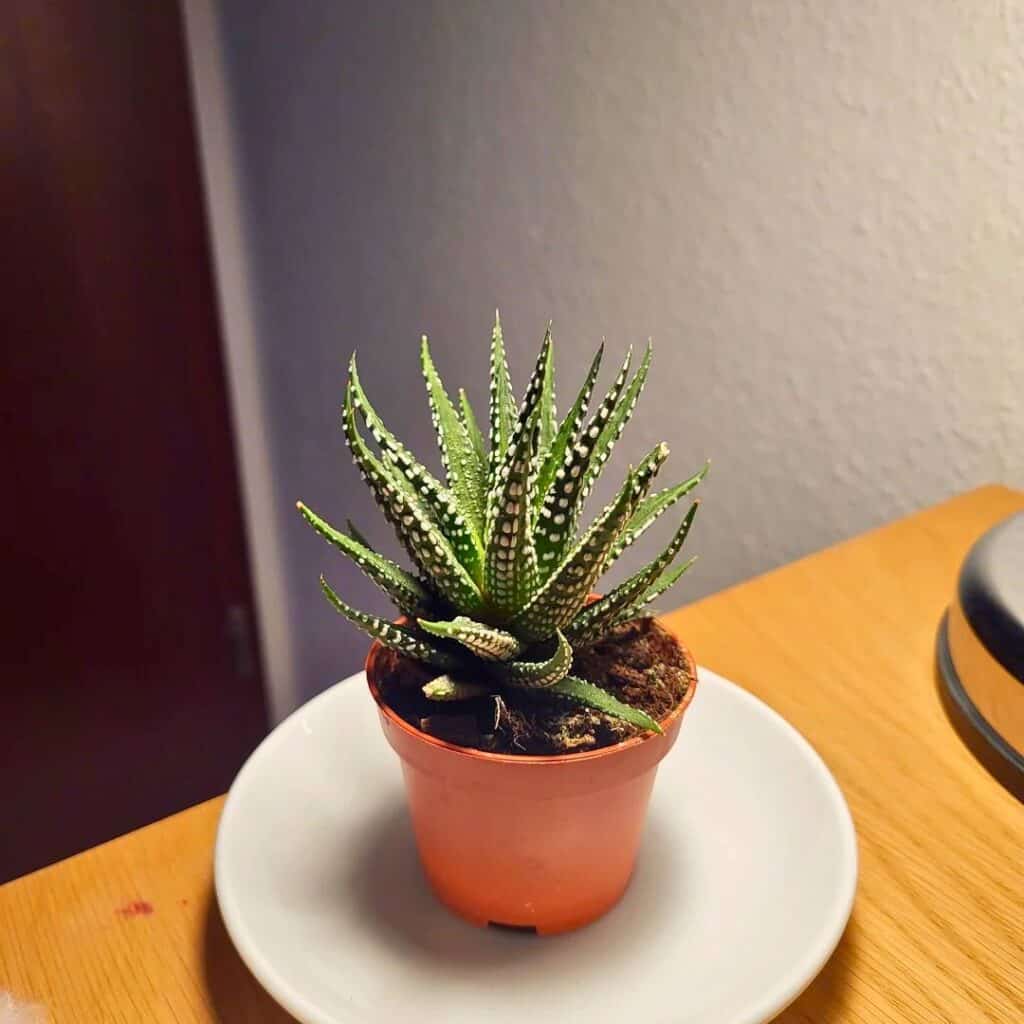
I have a soft spot for Haworthia Fasciata, or zebra plant. It’s seriously one of the easiest succulents I’ve ever grown indoors.
Those dark green leaves with white stripes? They really pop on a windowsill.
It doesn’t need a ton of light, which is great if you don’t have a super sunny spot. Mine sits near a bright window, but honestly, it’s survived just fine in shadier corners too.
The main thing is the soil. It needs to drain well—I always use a cactus or succulent mix so the roots don’t get soggy.
I try not to water much, especially in winter. Too much water is a killer—root rot creeps up fast—so I let the soil get bone dry before watering again.
It’s small and stays that way, which is perfect if you’re short on space. I’ve got mine on my desk and it barely takes up any room.
It grows so slowly, I barely ever have to repot it. That’s a win in my book.
Even when the air gets dry in winter, it holds up. Those thick leaves are basically water tanks, so I don’t have to fuss over it.
For me, Haworthia Fasciata is just an easy, good-looking plant that doesn’t mind the cold months indoors.
2) Jade Plant (Crassula Ovata)

I’m a big fan of my Jade Plant—it’s one of those succulents that just doesn’t quit, even inside during winter.
Its thick, shiny leaves store water, so I can go a while between waterings.
I keep it by a bright window for lots of indirect sunlight. If it doesn’t get enough, it starts looking a little sad and leggy, so I try to keep it happy with as much light as possible.
In the colder months, I let the soil dry out before I give it more water. Overwatering is a surefire way to get root rot, so I’m careful. Usually, a little drink every few weeks is plenty.
Jade Plants grow slowly, which is nice if you don’t want to deal with constant pruning. If it does get too tall, trimming it back is easy enough.
I’ve found it likes room temperatures between 60–75°F. It’ll handle cooler nights, but I keep it away from chilly drafts or heaters.
What I like most? It just lasts. With a bit of care, my Jade Plant sticks around year after year, even through those long, cold winters.
3) Christmas Cactus (Schlumbergera)
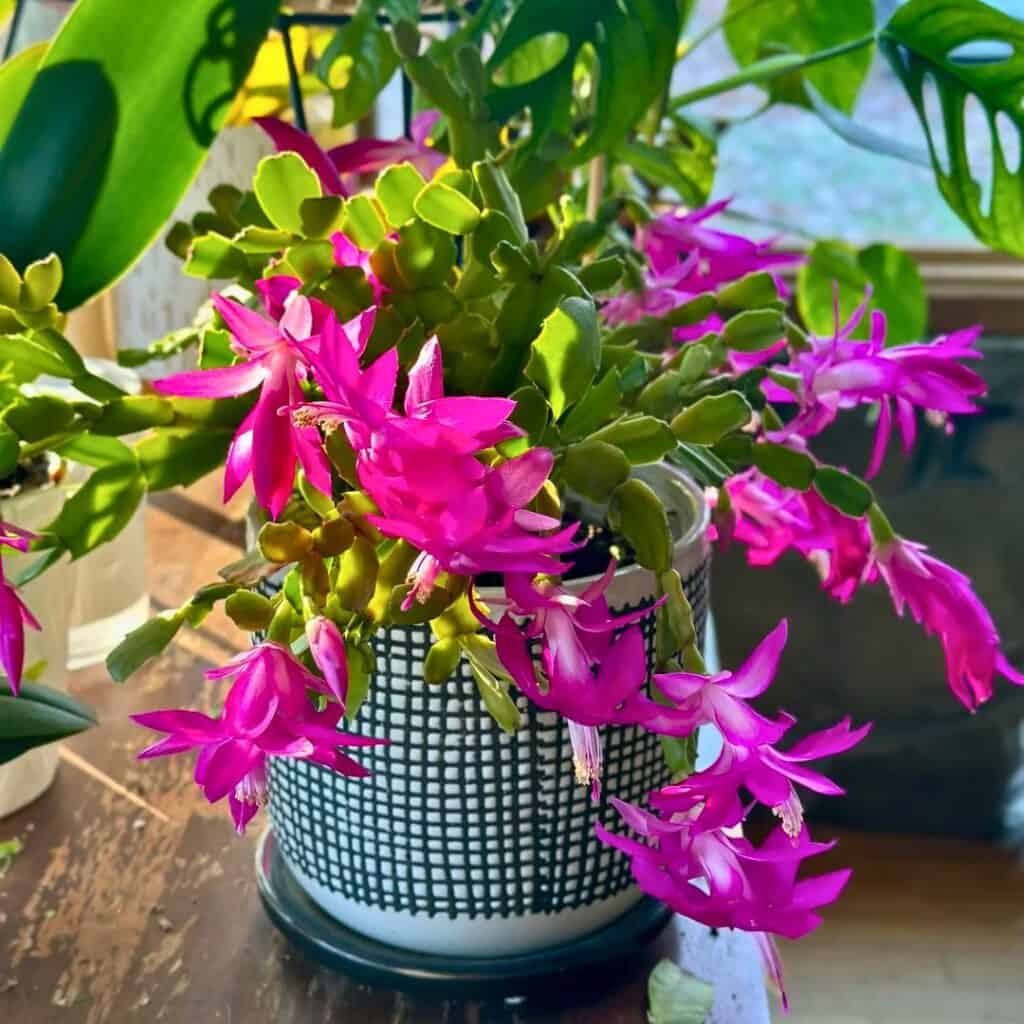
The Christmas Cactus really brightens up my place in winter. It doesn’t have the usual sharp spines—just flat, green segments that feel smooth.
When it blooms, the colors are incredible—bright pink, red, or white flowers if you treat it right. I’ve noticed it prefers a cool room with indirect light. Too much sun and the leaves turn yellow, which is never a good look.
I water mine when the top inch of soil is dry. Overwatering can rot the roots, so I always make sure the pot drains well. A light succulent mix works best.
The coolest thing? Christmas Cactus can live for ages. With a little attention, it usually blooms right around the holidays, which is such a treat.
I move mine to a bit of a darker spot in early fall to help it set buds. Once the flowers show up, they hang around for weeks and make the whole room feel festive.
4) Snake Plant (Sansevieria)
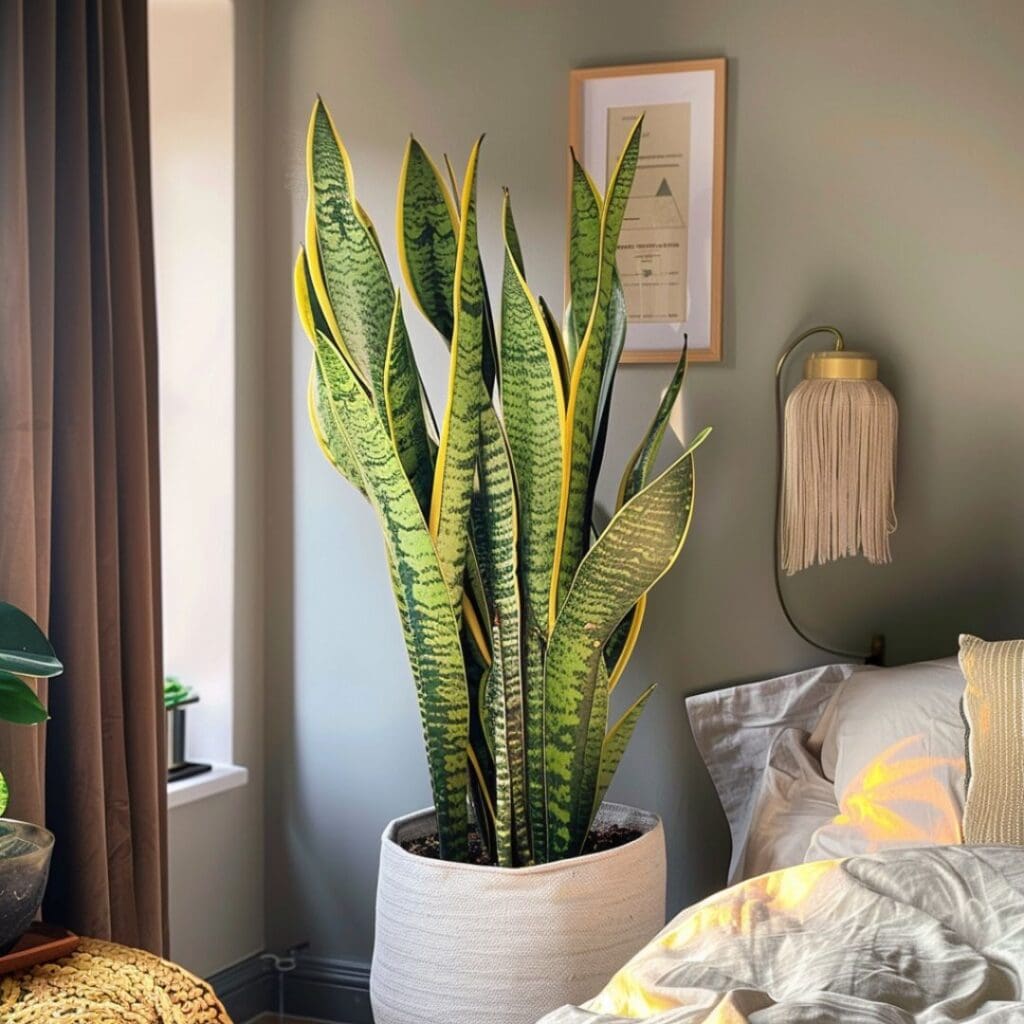
Snake Plant is just so reliable. It puts up with almost anything—short days, weak light, you name it. That’s why I keep one around when winter hits.
I barely have to water it. The leaves are thick and store moisture, so I just wait until the soil is dry. Too much water is way worse than too little.
Mine sits in a spot with indirect light, but it’s honestly fine in low light too. That’s handy when the sun is basically a rumor in winter.
It doesn’t really grow much when it’s cold, but that’s totally normal. I skip the fertilizer until spring since it’s basically napping.
Those upright leaves make my room look tidy and modern. I don’t have to trim or fuss with it much at all.
Honestly, this plant is about as easy as it gets. It’s low-maintenance and dependable, which is just what I want in winter.
5) Echeveria Elegans
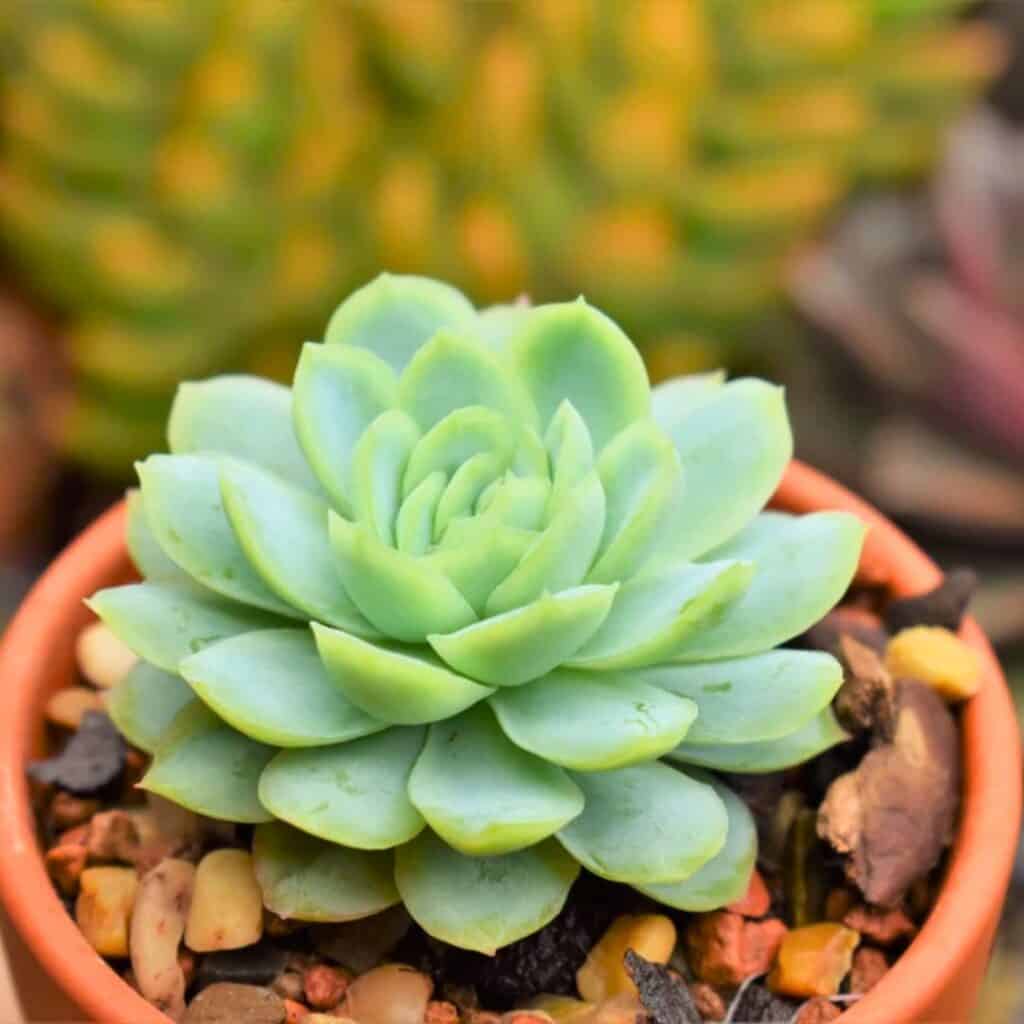
I’ve got a soft spot for Echeveria Elegans, the Mexican Snowball. It stays neat and compact, and those blue-green rosettes really brighten up my window.
It does surprisingly well indoors in winter. Lower light isn’t a problem, though I keep mine near a bright window for indirect sunlight.
I always let the soil get dry before watering. It hates soggy soil, especially when it’s cold. I just water when the dirt is totally dry.
It grows slowly, so I don’t have to fuss with repotting or trimming much. That’s a relief.
If it gets enough light, the leaves stay tight and colorful. If it starts stretching, I know it needs a sunnier spot—easy fix.
6) Graptopetalum Paraguayense
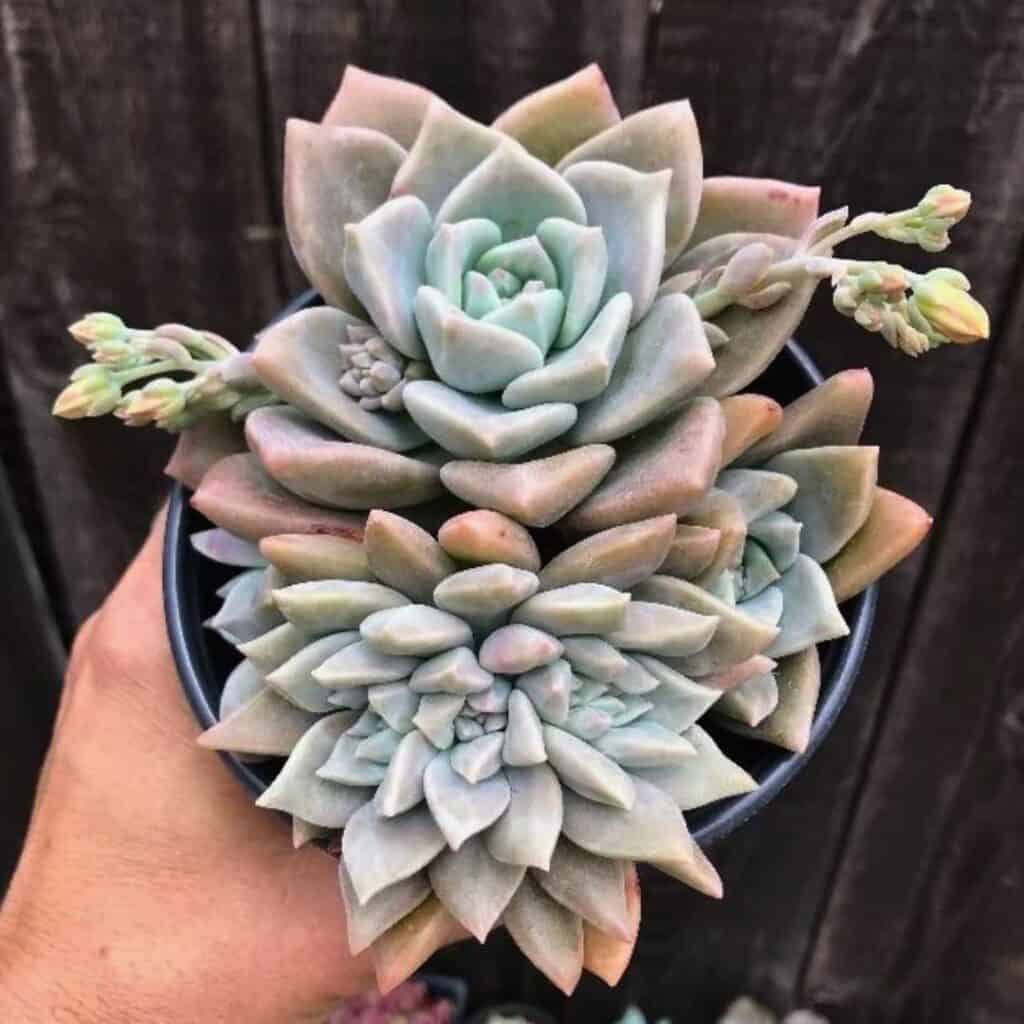
Graptopetalum paraguayense, or Ghost Plant, is honestly one of the easiest succulents to keep indoors. Its pale gray leaves sometimes look pink or purple, which is kind of cool.
It likes bright, indirect light, but can handle a bit of direct sun. Mine sits by a south window and gets through winter just fine.
I let the soil dry out all the way before watering. Root rot is a real risk with too much water, so I always check the soil first. A well-draining mix is a must.
If you bump it, the leaves can fall off easily. But the upside? Those leaves usually root and turn into new plants if you drop them on soil. It’s a fun way to propagate more Ghost Plants.
The rosette shape stays nice and compact, so it doesn’t hog space. I like how the color is more muted compared to the other greens I have.
Once winter hits, I just water less since it slows down. That’s it—super easy. It’s a low-maintenance pick for anyone who wants an easy indoor succulent.
7) Sedum Morganianum (Burro’s Tail)

Sedum Morganianum, or Burro’s Tail, is a favorite of mine. Those long, trailing stems covered in plump green leaves look awesome in a hanging basket.
It’s happy indoors in winter as long as it gets bright, indirect light. A sunny window works, but I avoid harsh direct sun that can scorch the leaves.
I water sparingly and wait for the soil to dry out. If you overwater, the leaves fall off like crazy, so I’m careful.
The leaves are delicate—they break if you touch them too much. I try to keep it somewhere safe from bumps.
It grows slowly, which is fine by me. With just a little care, Burro’s Tail keeps its lush look all winter.
8) Aloe Vera

Aloe Vera is such a classic. It’s super low-maintenance and stays healthy indoors through winter without much effort. The thick, green leaves always make my space feel fresher.
It loves bright, indirect light. I keep mine near a sunny window, but I make sure the leaves don’t touch cold glass—learned that one the hard way.
I only water when the soil is dry. Too much water leads to root rot, so I let it dry out fully before watering again. Drainage holes in the pot are a must.
It barely grows in winter, so I hold off on fertilizer until spring. I just keep it in a stable spot with steady temperatures.
Aloe Vera stays neat and doesn’t sprawl, so it fits nicely on a windowsill or table.
It’s one of the easiest succulents to enjoy indoors all winter. It stays green, doesn’t ask for much, and adds a chill vibe to my home.
9) Zebra Plant (Haworthiopsis Attenuata)

I really like the Zebra Plant—it’s honestly one of the easiest succulents for indoors. Those dark green leaves with white stripes look so good on a shelf or windowsill.
It does best in bright, indirect light. I keep mine near a window, but not right in the sun for too long or the leaves get stressed.
It barely needs water. I let the soil dry out completely before watering again. Overwatering is a quick way to lose it, so drainage holes are a must.
It handles cooler indoor temps in winter just fine. I just keep it away from drafts and heating vents.
It stays small and compact, perfect for desks or tight spots. If you’re just starting out, this one’s a great pick.
When I want to help it along, I use a succulent fertilizer once in spring or summer. That keeps the stripes looking sharp.
10) Panda Plant (Kalanchoe Tomentosa)

I’ve got a soft spot for the Panda Plant. Those fuzzy, silvery leaves with brown tips are just so unique—honestly, they’re kind of irresistible.
It’s one of those succulents that just begs to be touched, and it looks adorable sitting on a desk or windowsill. The texture alone makes it stand out from the rest of my indoor plant crowd.
This little guy likes bright, indirect light, which is perfect for winter. I’ve learned the hard way not to put it in direct sun, though—it’ll scorch those lovely leaves.
Filtered sunlight from a bright window does the trick. It’s not picky about location as long as it gets enough light.
I water my Panda Plant only when the soil feels dry. Overwatering is a real risk for root rot, so I always double-check that the pot drains well.
In winter, I water even less—sometimes I almost forget about it, but that seems to work out fine. Less is more with this one.
The Panda Plant grows slowly, which honestly is a relief. There’s no need for constant repotting or trimming.
Its compact size makes it perfect for small spaces—I’ve squeezed it onto shelves and little corners without any trouble.
It’s also just so low-maintenance. I don’t have to fuss over it, and it stays cute year-round.
With a bit of care, it can stick around for ages indoors. That’s my kind of plant.
Creating the Ideal Indoor Winter Environment
I try to keep my succulents healthy in winter by tweaking their light, temperature, and containers. It’s surprising how much difference a few small changes can make.
Lighting Tips for Healthy Succulents
Most of the time, I’ll put my succulents near a south-facing window. That’s where they get the most sun, especially when the days are short.
If I can’t manage that, I’ll set up a grow light for about 10–12 hours a day. It’s not fancy, but it gets the job done.
I make a point to rotate the pots every week. That way, all sides get a fair share of light and the plants don’t start leaning or stretching.
Stretching is usually a sign they’re craving more light, so if I spot tall, spindly growth, I know it’s time to adjust.
For tight spots, I use clip-on LED grow lights. They’re pretty handy and don’t take up much space.
I keep the lights about 6–12 inches above the plants. Any closer and I worry about burning the leaves.
Temperature and Humidity Control
I try to keep the room between 60–75°F during the day and make sure it doesn’t drop below 50°F at night. Sudden cold snaps can really stress succulents.
I avoid drafty windows and doors, just to be safe. It’s easy to overlook, but those little chills can set them back.
Humidity is another thing. Most succulents like dry air, so I steer clear of bathrooms and kitchens.
If the air feels bone-dry, I might run a humidifier in another part of the room. I don’t want it blowing right on the plants, though.
I also keep succulents away from heaters and vents. Hot air dries out the soil too fast and can mess with the leaves.
A steady, moderate environment just seems to make everything easier in winter.
Choosing the Right Containers
I always go with pots that have drainage holes. Succulents hate sitting in soggy soil, and drainage is the only way to avoid root rot.
Clay or terracotta pots are my favorites—they let the soil dry out faster, which helps a lot indoors.
Sometimes I’ll slip the main pot into a decorative cover pot for looks. That way, I get the style I want without sacrificing airflow or drainage.
I try to match the pot size to the plant. Too big, and the soil stays wet way too long.
A snug fit means healthier roots and makes watering so much easier to manage.
Watering and Feeding Succulents in Winter
I keep my succulents going strong by changing how much I water and skipping fertilizer in winter. It’s all about adjusting to their slower pace when it’s cold.
Adjusting Watering Frequency
In winter, my succulents just don’t need much water. They grow slowly, so I wait until the soil is completely dry before watering again.
Usually, that means watering every 3 to 4 weeks, but honestly, it depends on how warm or dry my place is.
I always poke my finger in the soil to check before I water. If it feels even a little damp, I hold off.
Overwatering is probably the biggest risk in winter, so I’m careful not to get carried away.
Drainage holes are a must—water needs to run out the bottom fast so the roots aren’t sitting in wet soil.
If I notice wrinkled leaves, that’s my cue they’re thirsty. Even then, I water lightly instead of drenching the soil.
Fertilizer Needs During Dormancy
When winter hits, my succulents go into a dormant period. They’re not growing much, so I skip fertilizer completely.
Adding nutrients when they’re resting can actually do more harm than good. I just let them chill until spring.
Once they start perking up with new growth, I’ll use a diluted cactus or succulent fertilizer about once a month. But not until then.
In winter, less is definitely better. Skipping fertilizer helps keep my plants balanced and happy.
Frequently Asked Questions
Some succulents are surprisingly good at handling cooler indoor weather. It just takes the right combo of light, soil, and careful watering to see them through winter.
What are some hardy succulents that thrive indoors during cold months?
I like to keep Haworthia Fasciata, Jade Plant, Christmas Cactus, Snake Plant, and Echeveria Elegans inside when it’s cold. They handle low light and cooler air better than most.
How do I care for my indoor succulents when the temperature drops?
I move them away from drafty windows and heating vents. I try to keep the room between 55–75°F—big temperature swings are rough on them.
Can succulents survive snow if kept inside?
Absolutely. As long as they’re indoors and away from freezing drafts, snow outside isn’t a problem.
What’s the best way to water indoor succulents in winter?
I water way less than in summer. I wait until the soil is bone-dry before giving them a drink, just to avoid root rot.
How much sunlight do my indoor succulents need during winter?
I aim for 4–6 hours of bright, indirect light every day. If the sun’s weak, I’ll use a grow light to fill in the gaps.
Are there any special soil requirements for indoor winter succulents?
I usually stick with a well-draining cactus or succulent mix.
Honestly, tossing in a bit of sand or perlite makes a big difference—it helps prevent the soil from getting soggy.
Recommended Garden Supplies
| Product Image | Our Recommended Gardening Supplies | Check Offers! |
|---|---|---|
Top Top
Top
Top
Top
Top
Top
Top
Top | rePotme Houseplant and Tropical Classic Potting Soil Mix | Check Offer On Amazon |
 Top
Top
Top
Top
Top
Top
Top
Top | Espoma Organic Indoor Plant Food | Check Offer On Amazon |
 Top
Top
Top
Top
Top
Top
Top
Top | GooingTop LED Grow Light 6000K Full Spectrum Clip Plant Growing Lamp | Check Offer On Amazon |
 Top
Top
Top
Top
Top
Top
Top
Top | Soil Moisture Meter | Check Offer On Amazon |
 Top
Top
Top
Top
Top
Top
Top
Top | Govee Hygrometer Thermometer, Bluetooth Enabled! | Check Offer On Amazon |
 Top
Top | LEVOIT Humidifiers for Large Room(Best For Plants) | Check Offer On Amazon |
 Top
Top
Top
Top
Top
Top
Top
Top | Upgraded DIY Automatic Drip Irrigation Kit, 15 Potted Houseplants Support | Check Offer On Amazon |
 Top
Top
Top
Top
Top
Top
Top
Top | Stainless Steel Heavy Duty Gardening Tool Set | Check Offer On Amazon |
 Top
Top
Top
Top
Top
Top
Top
Top | Bonide Insecticidal Soap | Check Offer On Amazon |
 Top
Top
Top
Top
Top
Top
Top
Top | Bonide 32 oz Spray Neem Oil for Organic Gardening | Check Offer On Amazon |
 Top
Top
Top
Top
Top
Top
Top
Top | Garden Safe Fungicide | Check Offer On Amazon |


